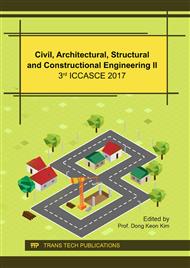p.140
p.146
p.152
p.159
p.166
p.173
p.179
p.183
p.197
Study on Urban Bridge Layout Oriented by Slow-Traffic and Lingering Space - Taking Shanghai Suzhou Creek as an Example
Abstract:
Through the investigation of bridges along Shanghai Suzhou Creek, we find a lot of problems. Firstly, Bridge layout is unreasonable. Secondly, mobiles occupy the main traffic volume. Thirdly, slow-traffic and lingering space isn’t comfortable. This study proposes the bridge planning and design idea oriented by slow-traffic and lingering space. Learning from overseas experiences, we put forward the bridge layout suggestions for Suzhou Creek from three aspects. First is to construct the reasonable distance between slow-traffic and lingering bridges. Second is to build the bridge system suitable for fast and slow-traffic. The last is to connect the cross-river attracted sources and bridges. Based on the above, we propose the bridges layout suggestion plan of Suzhou Creek.
Info:
Periodical:
Pages:
166-172
Citation:
Online since:
February 2018
Authors:
Keywords:
Price:
Сopyright:
© 2018 Trans Tech Publications Ltd. All Rights Reserved
Share:
Citation:


